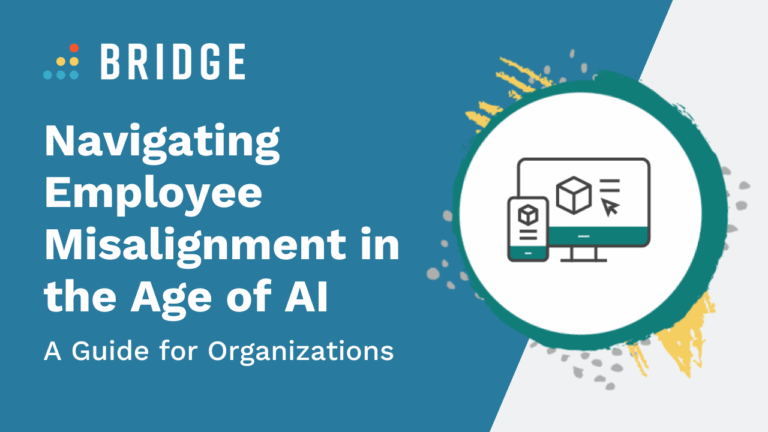Your sales team is often the first point of contact many have with your organization. To be successful, your team should have excellent communication, teamwork skills, knowledge of your product, industry, processes, and mastery of your CRM. There’s a lot to learn, and new employees often feel like they’re drinking from the firehose!
For new hires to perform at their best, a structured onboarding process is a must. According to the 2022 State of Sales Enablement Report, effective onboarding decreases ramp-up time by 26% (which speeds up revenue production) and increases engagement by 22% for sales reps.
Sales Onboarding Best Practices
A successful sales onboarding strategy lays out the tools, resources, and knowledge new hires need for every step of their onboarding journey. Carefully planning each interaction and touchpoint means giving them the information they need when it’s relevant.
You can streamline the process and maximize results when you provide opportunities to learn in the flow of work, practice real-world situations in a safe environment, and receive ongoing feedback.
Here are seven best practices to incorporate into the sales onboarding process:
1) Break the Onboarding Journey Down Daily
Giving new hires only the learning they need at each stage and not allowing them to progress beyond a certain point—sometimes known as course chunking—means they won’t feel overwhelmed by tasks or information. Strip the onboarding journey down to the basics, space out learning, and build upon it daily by adding more detail, as this communicates clear expectations about what they should know.
2) Promote Regular One-on-Ones
In the first week, daily communication enables stakeholders to quickly answer questions and discuss what their new hire has learned and remembered each day. They need to be sure their new team member understands what they’ve retained from a course, a meeting, or a piece of work-based training, and that they know how to apply it.
As new hires become more comfortable with their responsibilities, one-on-ones will become less frequent. However, it’s good practice for managers to check in and arrange catch-ups a few times a week until the onboarding process is over. They can both make best use of this time by scheduling meetings for the moments when employees might need extra guidance or when they want to discuss feedback. When sales reps finish onboarding, the best practice habit is to have a one-on-one with their manager weekly.
ONE-ON-ONE BEST PRACTICES | ‘One-on-One Meetings: How the Personal Touch Improves Workplace Performance’
3) Keep Onboarding Simple
A successful onboarding process teaches new starters about organizational structure, strategy, values, and how they fit into the team. New sales reps also need to know the department and team specifics, such as processes, methodologies, culture, strategies, products, role expectations, and customer profiles. There’s a lot to cover, so keep it simple and avoid technical jargon, acronyms, or other language differences they might be unfamiliar with.
Leaders, subject matter experts, and peers are a valuable source of learning content for new employees. Using these individuals as a resource will take the burden off busy team leaders while helping the employee feel more connected to their wider team. A video library with important information such as product and software demos, an introduction to the sales team, and recordings of high-performing reps delivering winning conversations can provide much-needed clarity. Lean into other short, interactive formats like checklists, games, and quizzes to engage employees and give them the flexibility to learn in ways that suit them best.
ENRICH LEARNING EXPERIENCES WITH USER-GENERATED CONTENT | ‘How Personalized Learning Enhances Employee Skills Development’
4) Learn, Try, and Apply
Make time for practice activities so your people can try out what they’ve learned and experiment with how to apply it. Mentoring, shadowing, and role-play scenarios with coworkers in the department offer a first-hand look into best practices and act as a valuable source of feedback.
Employees can play out the scenarios they’re likely to encounter daily and try out different strategies, such as responding to questions, opening a conversation with clients, or even talking through how they’d handle a situation. It’s also a good chance for peers to step into a mentoring role for your new hires and provide actionable feedback on their performance.
FIND OUT HOW EMPLOYEES LIKE TO LEARN | ‘Does Your L&D Approach Meet the Needs of Today’s Learner?’
5) Define Performance Expectations
During the first week, managers should meet with new starters to discuss goals, how those goals align with team and company priorities, and how to track them against relevant metrics. At this stage, it’s about familiarizing them with the process and encouraging them to play an active role in their own development. It’s a good time to think about their career aspirations and how they can turn their own ambitions into future goals. You can uncover what they want to accomplish during their career and explore their motivations with Bridge Career Drivers.
Keep initial goals focused on short-term onboarding activities such as passing an assignment or developing a skill to show new starters how their work drives performance. Managers and employees will revisit and adjust these goals frequently. As employees work through the onboarding journey and gain more hands-on experience, their goals will steadily become more relevant to those of their role and team. For example, they may shift towards goals such as increasing win rate or reducing customer churn. Setting individual goals should always be collaborative and, where possible, align with the employee’s desired skills.
ONBOARDING BEST PRACTICES | ‘Onboarding Remote Employees: A Strategy for Success’
6) Identify and Close Individual Skills Gaps
Regardless of responsibility or seniority, there’s no reason why the onboarding journey shouldn’t be similar for any new sales talent in the first month. Laying the foundations with learning, one-on-ones, and practice activities will give them the exposure they need to be successful.
The specific skills and competencies the whole team or department needs should be introduced early in the onboarding process. This way, new sales reps have time to learn on the job and see these key skills in action. The second half of the journey should then be used to bridge skills gaps. Use results and feedback to identify development opportunities and rework the journey with relevant training courses and on-the-job assignments.
HOW ONE COMPANY CUT SALES ONBOARDING TIME BY 67% AND INCREASED REVENUE BY 10% | ‘Transamerican’s Success Story’
7) Support Learning and Development Beyond Onboarding
By weaving ongoing communication, skills feedback, and relevant learning into the journey, most new sales talent can complete onboarding in a few months. After finishing assigned tasks, end the journey with certifications to check they’ve learned everything they need to know, and understand how to apply it. Criteria will vary depending on day-to-day responsibilities, but some examples like conducting a virtual conversation and showing negotiation abilities demonstrate success.
Over the next four to six months, focus on learning in action—informed by ongoing feedback, regular one-on-ones, and performance conversations. The supportive culture established during onboarding should continue beyond the first few months.
TRANSFORM YOUR LEARNING AND DEVELOPMENT CULTURE | ‘The Definitive Guide to Employee Development’
Sales Onboarding Timeline for New Hires
Here’s an outline of where new hires should be at each stage of the onboarding journey:
The First Week: Set Clear Expectations
In the first week, new hires should:
- Learn about organizational values, policies, goals, mission, and structure
- Meet with their manager daily
- Complete daily training and tasks introducing tools and processes
- Meet their team
Within the First Month: Practice and Prepare
In the first month, new hires should:
- Meet with leaders, sales team peers, and stakeholders who will influence their role
- Continue to develop knowledge and skills with learning courses
- Practice scenarios through role-play, mentoring, shadowing, and building on-the-job experience
- Meet with their manager several times a week and during key moments in the onboarding journey
Within the Second Month: Tailor Learning and Development
In the second month, new hires should:
- Pursue learning and development to close individual skills gaps
- Shadow and connect to on-the-job experience
- Review and update performance goals
- Meet with their manager weekly and during key moments
- Receive peer and manager feedback from on-the-job training, assign a mentor
- Finish onboarding
Month Three and Beyond: Learn in the Flow of Work
After the second month, new hires should:
- Showcase skills, behaviors, and product knowledge to achieve certification and complete the formal onboarding process
- Continue to meet with their manager during weekly one-on-ones
- Discuss progress over the last quarter and long-term development goals during a performance review
- Be continuous learners with ongoing learning and development opportunities
Create Impactful Onboarding Experiences With Bridge
Set your sales reps up for success with Bridge. Lead an experience to give new employees the information they need exactly when they need it. Controlling the flow of information means they’re always sure what’s expected and how to apply their new knowledge and skills.
Break learning down into engaging pieces, connect employees with their managers and peers, integrate performance goals into their workflow, and make the path to productivity faster and more seamless than ever.




